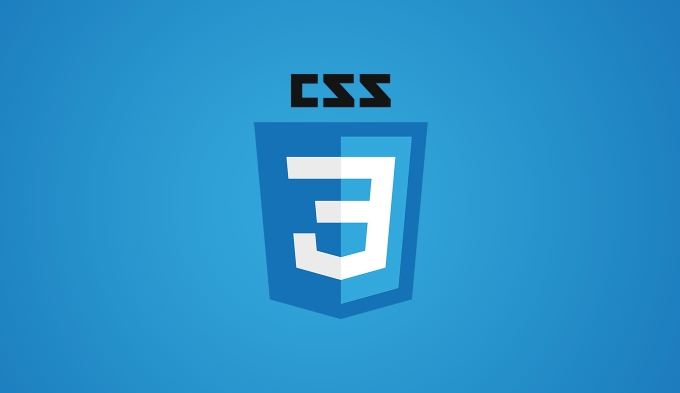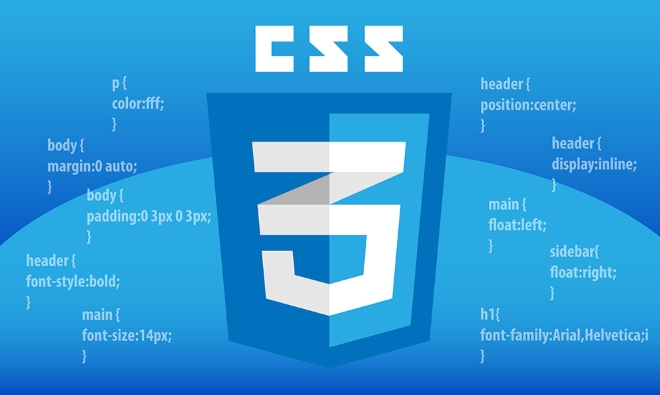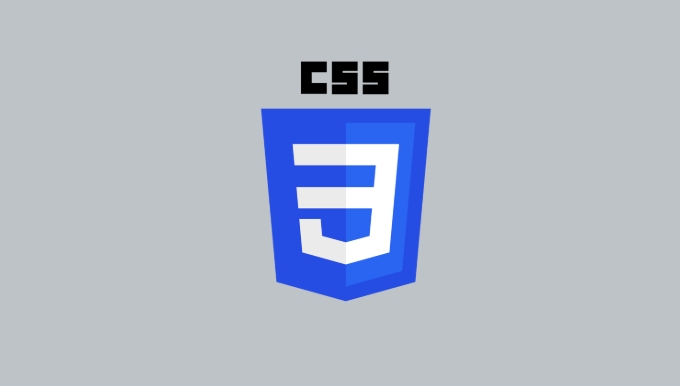CSS performance optimization improves web page loading speed and user experience. The main methods include: 1. Reduce the CSS file size, use compression tools, delete redundant code, merge class names, and avoid global resets; 2. Use critical path CSS, extract and inline the required styles on the first screen, and delay loading of non-critical CSS; 3. Load non-critical CSS asynchronously, use media attributes, dynamic insertion or preload; 4. Optimize selectors and hierarchical structures, give priority to class selectors, avoid long-chain nesting, and control specificity. These methods help speed rendering, reduce resource consumption, while taking into account maintainability.

CSS is an important part of web page loading speed and performance optimization. Many people only focus on the response time of images, scripts or servers, but in fact, the writing, loading method and structural design of CSS will directly affect the rendering speed of pages. Optimizing CSS can not only improve user experience, but also reduce resource consumption.

Reduce CSS file size
The smaller the file size, the faster it loads. Compressing CSS code is the most basic step. Unnecessary spaces, comments, and repeat styles can be automatically removed through the tool. In addition, avoiding deep nesting such as .container .box .item will not only affect readability, but also increase file size.

Some practical suggestions:
- Use CSS compression tools (such as Clean CSS, PostCSS)
- Delete unused CSS styles
- Merge the same or similar class names
- Avoid global resets (such as
* { margin: 0; padding: 0 }), and choose a lighter solution such asnormalize.css
Using Critical CSS (Critical CSS)
When the browser loads the page, it first parses HTML and CSS, and then renders the content. If the CSS file is too large or the loading order is unreasonable, the user will see a white screen or the layout will flash. Extracting and inlining the critical path CSS can make the content on the first screen display faster.

Implementation methods include:
- Tools automatically generate key CSS required for the first screen
- Inline this part of CSS into
of HTML - Delay loading of the remaining non-critical CSS
This allows users to see the basic content without waiting for the entire CSS file to load.
Asynchronously loading non-critical CSS
Not all CSS needs to be loaded early in the page loading. For example, styles for printing, styles for hidden components, etc. can be delayed or loaded on demand.
Common strategies are:
- Use
mediaattributes to load specific stylesheets asynchronously (such asmedia="print") - Dynamically insert CSS files (load after judging conditions through JavaScript)
- Use
rel="preload"to load certain important but non-critical CSS resources in advance
This will not only ensure the speed of the first screen, but will not miss the subsequent styles.
Optimize selectors and hierarchy
Although modern browsers are already very efficient in handling CSS, inefficient selectors can still cause performance problems. For example, complex selectors like div#main > ul li a will allow the browser to parse from right to left, which is less efficient.
Optimization suggestions include:
- Try to use class selectors (
.class) instead of ID or tag selectors - Avoid over-necking and long-chain selectors
- Control CSS specificity to avoid maintenance and performance issues caused by style coverage
In addition, keeping the CSS structure clear also helps with post-maintenance and debugging.
Basically, these common CSS performance optimization methods are all about. It is not necessary to use it all, but the effect will be obvious according to the project situation. The key is to understand the mechanism behind each step, rather than blindly copying it.
The above is the detailed content of Techniques for optimizing CSS performance and load times. For more information, please follow other related articles on the PHP Chinese website!

Hot AI Tools

Undress AI Tool
Undress images for free

Undresser.AI Undress
AI-powered app for creating realistic nude photos

AI Clothes Remover
Online AI tool for removing clothes from photos.

Clothoff.io
AI clothes remover

Video Face Swap
Swap faces in any video effortlessly with our completely free AI face swap tool!

Hot Article

Hot Tools

Notepad++7.3.1
Easy-to-use and free code editor

SublimeText3 Chinese version
Chinese version, very easy to use

Zend Studio 13.0.1
Powerful PHP integrated development environment

Dreamweaver CS6
Visual web development tools

SublimeText3 Mac version
God-level code editing software (SublimeText3)
 CSS tutorial for creating loading spinners and animations
Jul 07, 2025 am 12:07 AM
CSS tutorial for creating loading spinners and animations
Jul 07, 2025 am 12:07 AM
There are three ways to create a CSS loading rotator: 1. Use the basic rotator of borders to achieve simple animation through HTML and CSS; 2. Use a custom rotator of multiple points to achieve the jump effect through different delay times; 3. Add a rotator in the button and switch classes through JavaScript to display the loading status. Each approach emphasizes the importance of design details such as color, size, accessibility and performance optimization to enhance the user experience.
 Addressing CSS Browser Compatibility issues and prefixes
Jul 07, 2025 am 01:44 AM
Addressing CSS Browser Compatibility issues and prefixes
Jul 07, 2025 am 01:44 AM
To deal with CSS browser compatibility and prefix issues, you need to understand the differences in browser support and use vendor prefixes reasonably. 1. Understand common problems such as Flexbox and Grid support, position:sticky invalid, and animation performance is different; 2. Check CanIuse confirmation feature support status; 3. Correctly use -webkit-, -moz-, -ms-, -o- and other manufacturer prefixes; 4. It is recommended to use Autoprefixer to automatically add prefixes; 5. Install PostCSS and configure browserslist to specify the target browser; 6. Automatically handle compatibility during construction; 7. Modernizr detection features can be used for old projects; 8. No need to pursue consistency of all browsers,
 What is the difference between display: inline, display: block, and display: inline-block?
Jul 11, 2025 am 03:25 AM
What is the difference between display: inline, display: block, and display: inline-block?
Jul 11, 2025 am 03:25 AM
Themaindifferencesbetweendisplay:inline,block,andinline-blockinHTML/CSSarelayoutbehavior,spaceusage,andstylingcontrol.1.Inlineelementsflowwithtext,don’tstartonnewlines,ignorewidth/height,andonlyapplyhorizontalpadding/margins—idealforinlinetextstyling
 Styling visited links differently with CSS
Jul 11, 2025 am 03:26 AM
Styling visited links differently with CSS
Jul 11, 2025 am 03:26 AM
Setting the style of links you have visited can improve the user experience, especially in content-intensive websites to help users navigate better. 1. Use CSS's: visited pseudo-class to define the style of the visited link, such as color changes; 2. Note that the browser only allows modification of some attributes due to privacy restrictions; 3. The color selection should be coordinated with the overall style to avoid abruptness; 4. The mobile terminal may not display this effect, and it is recommended to combine it with other visual prompts such as icon auxiliary logos.
 Creating custom shapes with css clip-path
Jul 09, 2025 am 01:29 AM
Creating custom shapes with css clip-path
Jul 09, 2025 am 01:29 AM
Use the clip-path attribute of CSS to crop elements into custom shapes, such as triangles, circular notches, polygons, etc., without relying on pictures or SVGs. Its advantages include: 1. Supports a variety of basic shapes such as circle, ellipse, polygon, etc.; 2. Responsive adjustment and adaptable to mobile terminals; 3. Easy to animation, and can be combined with hover or JavaScript to achieve dynamic effects; 4. It does not affect the layout flow, and only crops the display area. Common usages are such as circular clip-path:circle (50pxatcenter) and triangle clip-path:polygon (50%0%, 100 0%, 0 0%). Notice
 How to create responsive images using CSS?
Jul 15, 2025 am 01:10 AM
How to create responsive images using CSS?
Jul 15, 2025 am 01:10 AM
To create responsive images using CSS, it can be mainly achieved through the following methods: 1. Use max-width:100% and height:auto to allow the image to adapt to the container width while maintaining the proportion; 2. Use HTML's srcset and sizes attributes to intelligently load the image sources adapted to different screens; 3. Use object-fit and object-position to control image cropping and focus display. Together, these methods ensure that the images are presented clearly and beautifully on different devices.
 What are common CSS browser inconsistencies?
Jul 26, 2025 am 07:04 AM
What are common CSS browser inconsistencies?
Jul 26, 2025 am 07:04 AM
Different browsers have differences in CSS parsing, resulting in inconsistent display effects, mainly including the default style difference, box model calculation method, Flexbox and Grid layout support level, and inconsistent behavior of certain CSS attributes. 1. The default style processing is inconsistent. The solution is to use CSSReset or Normalize.css to unify the initial style; 2. The box model calculation method of the old version of IE is different. It is recommended to use box-sizing:border-box in a unified manner; 3. Flexbox and Grid perform differently in edge cases or in old versions. More tests and use Autoprefixer; 4. Some CSS attribute behaviors are inconsistent. CanIuse must be consulted and downgraded.
 Demystifying CSS Units: px, em, rem, vw, vh comparisons
Jul 08, 2025 am 02:16 AM
Demystifying CSS Units: px, em, rem, vw, vh comparisons
Jul 08, 2025 am 02:16 AM
The choice of CSS units depends on design requirements and responsive requirements. 1.px is used for fixed size, suitable for precise control but lack of elasticity; 2.em is a relative unit, which is easily caused by the influence of the parent element, while rem is more stable based on the root element and is suitable for global scaling; 3.vw/vh is based on the viewport size, suitable for responsive design, but attention should be paid to the performance under extreme screens; 4. When choosing, it should be determined based on whether responsive adjustments, element hierarchy relationships and viewport dependence. Reasonable use can improve layout flexibility and maintenance.






